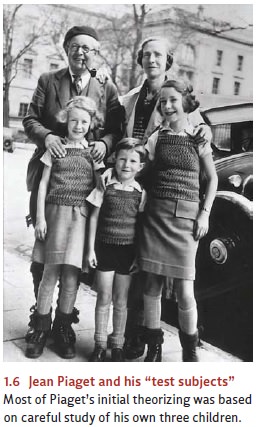Chapter: Psychology: Research Methods
Making Observations: Defining the Sample
Defining the
Sample
Often, psychologists want their conclusions to apply to a particular population—all members of a given group. In our discussion of aggression, for example, we’ve been con-sidering a claim that potentially applies to all children. In other cases, we might be con-cerned with a narrower population—all 3-year-olds living in urban environments, or all patients suffering from schizophrenia, or all white-collar workers. Whatever the population we’re aiming at, though, we almost never draw data from the entire population. Instead, investigators study only a sample—a subset of the population they are interested in.
Why should we care about this
distinction between sample and population? Imagine that an investigator studied
aggression in a sample of children from wealthy families, and drew conclusions
about boys and girls in general. These conclusions might be mis-leading because
it’s possible that wealthy children behave differently from other chil-dren.
Perhaps wealthy children are spoiled by their parents, so they’re less well
behaved; or perhaps wealthy children are better educated, so they’re better behaved. In any case, these
children might be different from their less wealthy peers; studying them might
tell us a lot about this particular subset of our population, but it might not
tell us much about others.
For these reasons, choosing a
sample is a critical step in data collection. And, like most steps in a
research project, the choice must be guided by the research question. If the
question concerns a broad population (“How do boys in general differ from girls
in general with regard to their aggression?”), then investigators need to
select a sample that reflects this broader group. If the question is more
specific (“How do Canadian boys differ from Canadian girls with regard to their
aggression?”), the sample must be adjusted appropriately.
We also need to keep in mind that
in any population, each person is different in some ways from every other. Some
people are outgoing, some are more restrained; some are energetic, some are
relaxed. How can we deal with this diversity and still make sure that our
sample represents the broader group? A crucial tool for this purpose is randomsampling—a procedure in which
every member of the population has an equal chanceof being picked to
participate in the study. Random sampling helps investigators ensure that their
sample mirrors the diversity of the overall population, so they can be more
confident that their sample really does inform them about the properties of the
popu-lation at large.
Random sampling is an important
tool, but it’s not the only approach to sampling. In some settings, for
example, a research question isn’t focused on what is common or typical in a
population. Instead, researchers want to ask what’s possible in that popula-tion, or they want to examine directly how
diverse the population is. For these
purposes, the researcher might use the strategy of maximum variation sampling—a strategy of deliberately seeking out
the unusual or extreme cases.
In addition, psychologists
sometimes find it useful—and even necessary—to
study single individuals rather than a broader sample. In these analyses, known
as casestudies, investigators report
data on one person—one case—in great detail. Casestudies have played an
enormous role in the history of psychology. Many of Sigmund Freud’s claims were
based on case studies—his analyses of the patients he saw in his clinical
practice. Likewise, Jean Piaget’s influential theorizing about child
development was based initially on the study of just three children—his own
(Figure 1.6). Piaget and his followers then went on to test his claims with
larger groups of chil-dren.

Case studies play a particularly
important role in the study of the brain—specifically, in efforts to understand
how the brain functions by examining cases of brain damage. One example is the
case of a man called H.M. (1926–2008), whose memory deficits— resulting from
neurosurgery for seizures—were severe and intriguing. H.M. was possibly the
most studied person in the history of psychology, and his pat-tern of deficits
offered crucial insights into how memory functions. Similarly, the case of
Phineas Gage (1823–1860) has influenced our understanding of the functions of
the brain’s frontal lobes. Phineas suffered damage to the frontal lobe when a
construction accident forced a piece of iron through his head. His case was one
of the first to inform psychologists about how damage to specific portions of
the brain can change someone’s personality. Examples like these remind us that
case studies are indeed an important part of the psychologist’s tool kit.
Related Topics